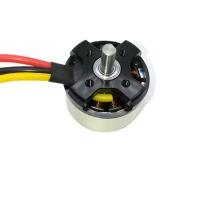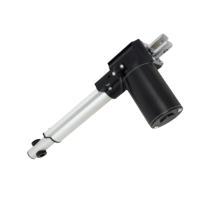| Sign In | Join Free | My himfr.com |
|
| Sign In | Join Free | My himfr.com |
|
| Ask Lasest Price | |
| Brand Name : | Go-Gold |
| Model Number : | KG-7598DC24 |
| Certification : | ISO |
| Price : | Negotiation |
| Payment Terms : | L/C, T/T, Paypal |
| Supply Ability : | 10000pcs-30 days |
| Delivery Time : | 7 Days for samples |
Essential Details
Warranty: 3 Years
Model Number: KG-7598DC24
Rated Voltage: 24V
Rated Speed: 2600RPM
Output Power: 24W
Continuous Current: Customizable
Place of Origin: Guangdong, China
Type: DC Motor
Application: Automatic Lifting Bed
Rated Torque: 6000N
Performance Specification
| Continuous Current | 2.5A | Output Power | 25W |
| Rated Voltage | 24V | Torque | 6000N |
Lead Time
| Quantity(pieces) | 1-1000 | 1001-10000 | >10000 |
| Lead time (days) | 15 | 30 | To be negotiated |
Drawings

Motor Picture

Motor Application

DC Motor Introduction
A DC motor is an electrical motor that uses direct current (DC) to produce mechanical force. The most common types rely on magnetic forces produced by currents in the coils. Nearly all types of DC motors have some internal mechanism, either electromechanical or electronic, to periodically change the direction of current in part of the motor.
DC motors were the first form of motors widely used, as they could
be powered from existing direct-current lighting power distribution
systems. A DC motor's speed can be controlled over a wide range,
using either a variable supply voltage or by changing the strength
of current in its field windings. Small DC motors are used in
tools, toys, and appliances.
DC Motor Working
A coil of wire with a current running through it generates an electromagnetic field aligned with the center of the coil. The direction and magnitude of the magnetic field produced by the coil can be changed with the direction and magnitude of the current flowing through it.
A simple DC motor has a stationary set of magnets in the stator and
an armature with one or more windings of insulated wire wrapped
around a soft iron core that concentrates the magnetic field. The
windings usually have multiple turns around the core, and in large
motors there can be several parallel current paths. The ends of the
wire winding are connected to a commutator. The commutator allows
each armature coil to be energized in turn and connects the
rotating coils with the external power supply through brushes.
(Brushless DC motors have electronics that switch the DC current to
each coil on and off and have no brushes.)
The total amount of current sent to the coil, the coil's size, and
what it is wrapped around decide the strength of the
electromagnetic field created.
The sequence of turning a particular coil on or off dictates what
direction the effective electromagnetic fields are pointed. By
turning on and off coils in sequence, a rotating magnetic field can
be created. These rotating magnetic fields interact with the
magnetic fields of the magnets (permanent or electromagnets) in the
stationary part of the motor (stator) to create a torque on the
armature which causes it to rotate. In some DC motor designs, the
stator fields use electromagnets to create their magnetic fields
which allows greater control over the motor.
At high power levels, DC motors are almost always cooled using
forced air.
Different number of stator and armature fields as well as how they
are connected provide different inherent speed and torque
regulation characteristics. The speed of a DC motor can be
controlled by changing the voltage applied to the armature.
Variable resistance in the armature circuit or field circuit allows
speed control. Modern DC motors are

|




